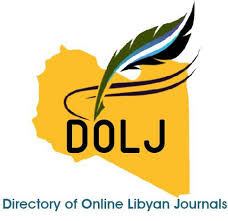Evaluation Of Effective Commercial Brands Of Sodium Valproate (Depaken) Drug Brands Sold In Pharmacies in Libya. A Prospective Study
DOI:
https://doi.org/10.54361/LJMR.19.2.10Keywords:
Sodium, Valproate, Drug, Brands, pharmacies, LibyaAbstract
Background: In Libya, there are a lot of different brands of Sodium Valproate (Depaken) tablets available from different international companies. The current study aims, to evaluate commercial brands of sodium Valproate (Depaken) drug sold in pharmacies in Libya. Materials and Methods: In this prospective revaluation study, a total of 40 cases (30-80) were patients who purchased Sodium Valproate drug with a label strength of 500 mg from two different brands of private pharmacies in Libya. Period from January 2023 to May 2023. The products were coded as A and B. This prospective study was conducted over 5 months. Conclusion: Our findings in this study, all brands of Sodium Valproate drug available in local pharmacies in Libya complied with international standards and can be interchangeable, while there was no significant variation in the effective rate of the drug, it can be inferred that the brands of Sodium Valproate drug are Commercial Brands equivalent.
Downloads
References
1. Simon RP, Greenberg DA, Aminoff MJ. Clinical Neurology. 7th ed. New York: McGraw-Hill; 2009. p. 85–92.
2. Victor TW, Hu X, Campbell JC, Buse DC, Lipton RB. Migraine prevalence by age and sex in the United States: a life-span study. Cephalalgia. 2010;30(9):1065–72. doi:10.1177/0333102409355601. PMID: 20713557.
3. Quintela E, Castillo J, Muñoz P, Pascual J. Premonitory and resolution symptoms in migraine: a prospective study in 100 unselected patients. Cephalalgia. 2006;26(9):1051–60. doi:10.1111/j.1468-2982.2006.01157.x. PMID: 16919055.
4. Giannini G, Cevoli S, Sambati L, Cortelli P. Migraine: risk factor and comorbidity. Neurol Sci. 2012;33(Suppl 1):S37–41. doi:10.1007/s10072-012-1029-6. PMID: 22644168.
5. Albers L, Milde-Busch A, Bayer O, Lehmann S, Riedel C, Bonfert M, et al. Prevention of headache in adolescents: population-attributable risk fraction for risk factors amenable to intervention. Neuropediatrics. 2013;44(1):40–5. doi:10.1055/s-0033-1342952. PMID: 23299655.
6. Mateos V, Guerrero-Peral ÁL, García M, Armengol-Bertolín S, Plazas MJ. Precipitating factors of migraine attacks in patients attended in neurology services: the FACTOR study. Rev Neurol. 2012;54(11):641–8. PMID: 22627745.
7. Carod-Artal FJ, Irimia P, Ezpeleta D. Chronic migraine: definition, epidemiology, risk factors and treatment. Rev Neurol. 2012;54(11):629–37. PMID: 22573510.
8. Eyer F, Felgenhauer N, Gempel K, Steimer W, Gerbitz KD, Zilker T. Acute valproate poisoning: pharmacokinetics, alteration in fatty acid metabolism, and changes during therapy. J Clin Psychopharmacol. 2005;25(4):376–80. PMID: 16012283.
9. Diamond S, Wenzel R. Practical approaches to migraine management. CNS Drugs. 2002;16(6):385–403. doi:10.2165/00023210-200216060-00003. PMID: 12027785.
10. Lipton RB, Bigal ME, Diamond M, Freitag F, Reed ML, Stewart WF, et al. Migraine prevalence, disease burden, and the need for preventive therapy. Neurology. 2007;68(5):343–9. doi:10.1212/01.wnl.0000252808.97649.21. PMID: 17261680.
11. Stark RJ, Stark CD. Migraine prophylaxis. Med J Aust. 2008;189(5):283–8. PMID: 18759728.
12. Afshari D, Rafizadeh S, Rezaei M. A comparative study of the effects of low-dose topiramate versus sodium valproate in migraine prophylaxis. Int J Neurosci. 2012;122(2):60–8. doi:10.3109/00207454.2011.626908. PMID: 21950578.
13. Silberstein SD, Holland S, Freitag F, Dodick DW, Argoff C, Ashman E, et al. Evidence-based guideline update: pharmacologic treatment for episodic migraine prevention in adults. Neurology. 2012;78(17):1337–45. doi:10.1212/WNL.0b013e3182535d20. PMID: 22529202.
14. Straube A, Gaul C, Förderreuther S, Kropp P, Marziniak M, Evers S, et al. Therapy and care of patients with chronic migraine: expert recommendations of the German Migraine and Headache Society and partners. Nervenarzt. 2012;83(12):1600–8. PMID: 23180057.
15. Evans RW. A rational approach to the management of chronic migraine. Headache. 2013;53(2):168–76. doi:10.1111/head.12014. PMID:
Downloads
Published
Issue
Section
License
Copyright (c) 2025 Ahmed Ali Ebshena, Zubaeda M Alsayeh, Abubaker Abutartour, Mohamed A, Ali Elwafi, Mohamed A, Ali Elwafi, Lotfia Elmajdoub (Author)

This work is licensed under a Creative Commons Attribution-NonCommercial-NoDerivatives 4.0 International License.
Open Access Policy
Libyan journal of medical Research (LJMR).is an open journal, therefore there are no fees required for downloading any publication from the journal website by authors, readers, and institution.
The journal applies the license of CC BY (a Creative Commons Attribution 4.0 International license). This license allows authors to keep ownership f the copyright of their papers. But this license permits any user to download , print out, extract, reuse, archive, and distribute the article, so long as appropriate credit is given to the authors and the source of the work.
The license ensures that the article will be available as widely as possible and that the article can be included in any scientific archive.
Editorial Policy
The publication of an article in a peer reviewed journal is an essential model for Libyan journal of medical Research (LJMR). It is necessary to agree upon standards of expected ethical behavior for all parties involved in the act of publishing: the author, the journal editorial, the peer reviewer and the publisher.
Any manuscript or substantial parts of it, submitted to the journal must not be under consideration by any other journal. In general, the manuscript should not have already been published in any journal or other citable form, although it may have been deposited on a preprint server. Authors are required to ensure that no material submitted as part of a manuscript infringes existing copyrights, or the rights of a third party.
Authorship Policy
The manuscript authorship should be limited to those who have made a significant contribution and intellectual input to the research submitted to the journal, including design, performance, interpretation of the reported study, and writing the manuscript. All those who have made significant contributions should be listed as co-authors.
Others who have participated in certain substantive aspects of the manuscript but without intellectual input should only be recognized in the acknowledgements section of the manuscript. Also, one of the authors should be selected as the corresponding author to communicate with the journal and approve the final version of the manuscript for publication in the LJMR.
Peer-review Policy
- All the manuscripts submitted to LJMR will be subjected to the double-blinded peer-review process;
- The manuscript will be reviewed by two suitable experts in the respective subject area.
- Reports of all the reviewers will be considered while deciding on acceptance/revision or rejection of a manuscript.
- Editor-In-Chief will make the final decision, based on the reviewer’s comments.
- Editor-In-Chief can ask one or more advisory board members for their suggestions upon a manuscript, before making the final decision.
- Associate editor and review editors provide administrative support to maintain the integrity of the peer-review process.
- In case, authors challenge the editor’s negative decision with suitable arguments, the manuscript can be sent to one more reviewer and the final decision will be made based upon his recommendations.












